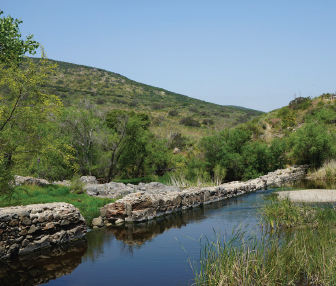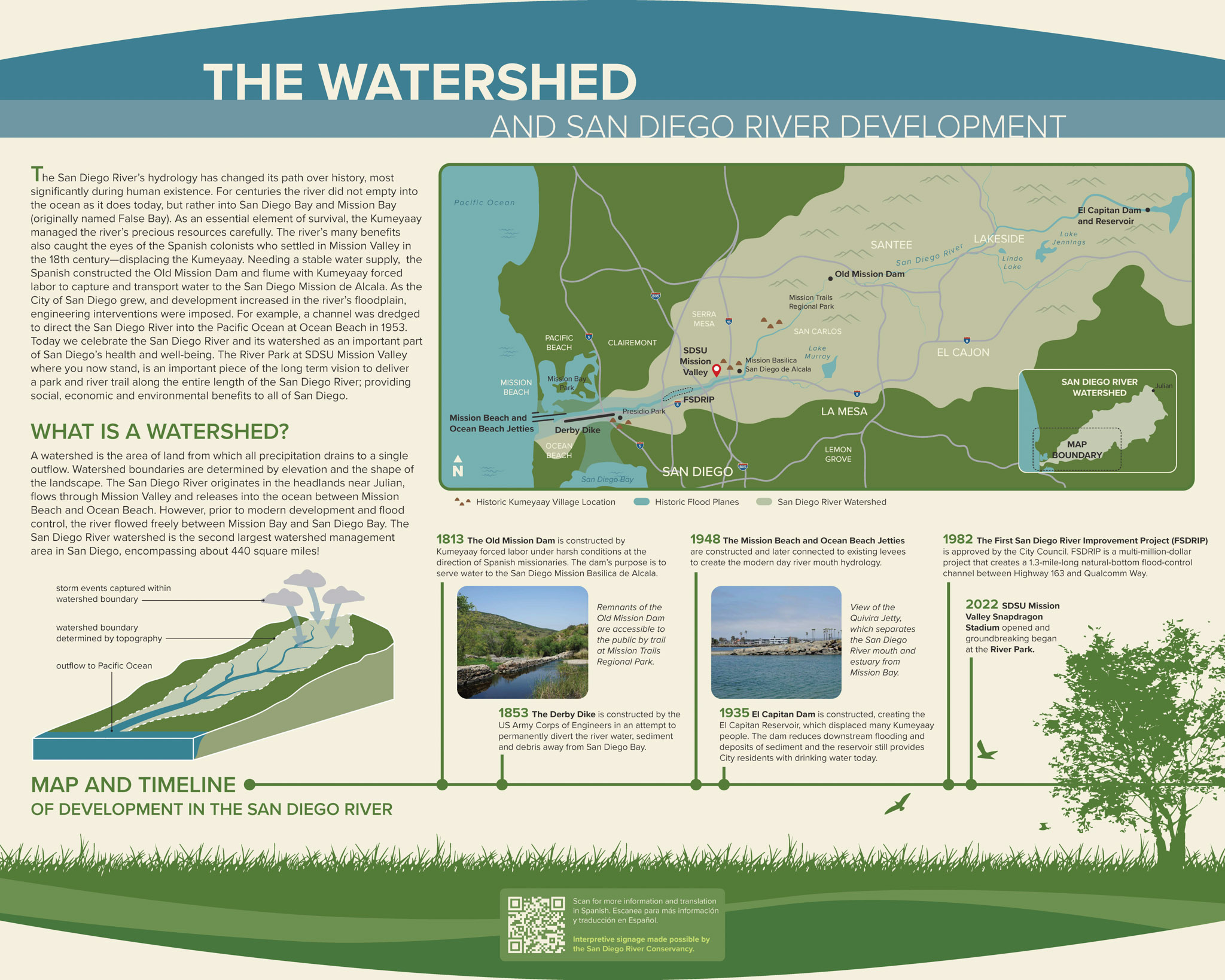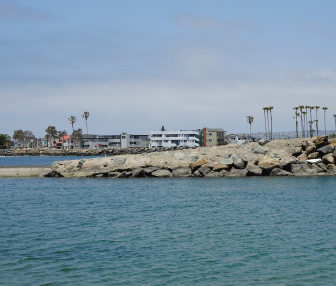
Watershed

The San Diego River’s hydrology has changed its path over history, most significantly during human existence. For centuries the river did not empty into the ocean as it does today, but rather into San Diego Bay and Mission Bay (historically called False Bay). As an essential element of survival, the Kumeyaay managed the river’s precious resources carefully. The river’s many benefits also caught the eyes of the Spanish colonists who settled in Mission Valley in the 18th century—displacing the Kumeyaay. Needing a stable water supply, the Spanish constructed the Old Mission Dam and flume with Kumeyaay forced labor to capture and transport water to the San Diego Mission de Alcala. As the City of San Diego grew, and development increased in the river’s floodplain, engineering interventions were imposed. For example, a channel was dredged to direct the San Diego River into the Pacific Ocean at Ocean Beach in 1953. Today we celebrate the San Diego River and its watershed for providing critical benefits to San Diego’s health and well-being. The River Park at SDSU Mission Valley where you now stand, is an important piece of the long term vision to deliver a park and river trail along the entire length of the San Diego River; providing social, economic and environmental benefits to all of San Diego.
WHAT IS A WATERSHED?
A watershed is the landscape area from which all precipitation drains to a single outflow. Watershed boundaries are determined by elevation and topography. The San Diego River originates in the headlands near Julian, flows through Mission Valley and releases into the ocean between Mission Beach and Ocean Beach. However, prior to modern development and flood control, the river flowed freely between Mission Bay and San Diego Bay. The San Diego River watershed is the second largest watershed management area in San Diego, encompassing about 440 square miles!
TIMELINE OF DEVELOPMENT IN THE SAN DIEGO RIVER
1813

The Old Mission Dam is constructed by Kumeyaay forced labor under harsh conditions at the direction of Spanish missionaries. The dam’s purpose is to serve water to the San Diego Mission Basilica de Alcala.1853
The Derby Dike is constructed by the US Army Corps of Engineers in an attempt to permanently divert the river water, sediment and debris away from San Diego Bay.1948

The Mission Beach and Ocean Beach jetties are constructed and later connected to existing levees to create the modern day river mouth hydrology.1935
El Capitan Dam is constructed, creating the El Capitan Reservoir, which displaced many Kumeyaay people. The dam reduces downstream flooding and deposits of sediment and the reservoir still provides City residents with drinking water today.1982
The First San Diego River Improvement Project (FSDRIP) is approved by the City Council. FSDRIP is a multi-million-dollar project that creates a 1.3-mile-long natural-bottom flood-control channel between Highway 163 and Qualcomm Way.2022
SDSU Mission Valley Snapdragon Stadium opened and groundbreaking began at the River Park.

